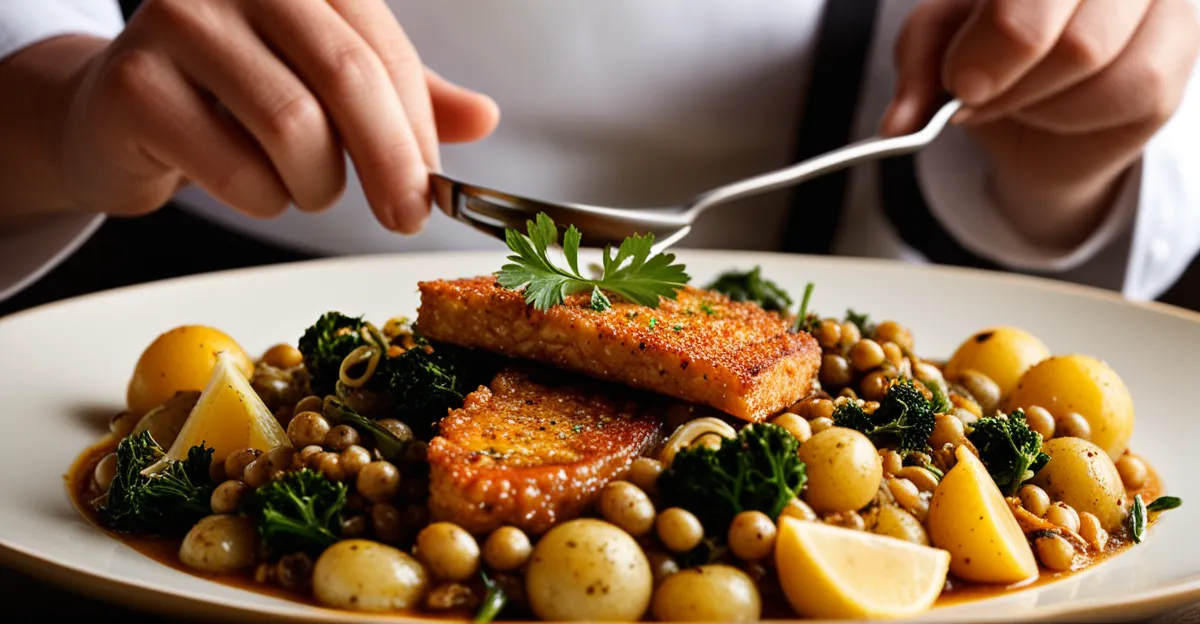Defining Iconic British Cuisine
When identifying iconic British dishes, several criteria come into play. A dish must be deeply rooted in history, regularly enjoyed across the country, and evoke a strong cultural identity. The importance of such food lies not only in its taste but also in its role in national traditions and social customs. For example, traditional British food often reflects regional ingredients and long-standing cooking methods passed down through generations. This adds layers of cultural significance that go beyond mere sustenance.
The culinary identity of Britain is shaped by its climate, geography, and socioeconomic history. Preservation techniques, such as pickling and baking, emerged from practical needs and evolved into beloved recipes. These dishes tell stories of resilience and community, qualities central to British heritage.
In parallel : How do you bake a traditional Bakewell tart from scratch?
Iconic British cuisine is not static; it embodies the everyday life and celebrations of the people. Classic recipes continue to influence menus today, serving as a foundation upon which contemporary chefs innovate. This blend of tradition and evolution ensures British food remains both a proud marker of the past and a vibrant part of present-day culture.
Classic Savoury Dishes of Britain
Classic British dishes like fish and chips, roast beef with Yorkshire pudding, and shepherd’s pie are deeply embedded in the nation’s food culture. Fish and chips, originating in the 19th century, combine battered, fried fish with thick-cut chips, offering a simple yet satisfying meal. This dish became a working-class staple and remains a symbol of British culinary tradition.
Also to read : What Are the Essential Techniques in Traditional UK Cooking?
The Sunday roast featuring roast beef and Yorkshire pudding is central to British dining. The roast beef is slow-cooked to tender perfection, while Yorkshire pudding uses a batter of eggs, flour, and milk baked until puffed and crisp, designed originally to complement the meat and absorb rich gravy. This meal fosters family gatherings and weekend rituals.
Shepherd’s pie and cottage pie, both meat-and-potato casseroles, highlight regional variations. Shepherd’s pie uses minced lamb, while cottage pie is made with beef. These are prime examples of savoury British food that provide warmth and nourishment, embodying the comforting aspect of traditional meals. Through these dishes, national favourites reflect Britain’s culinary identity, rooted in history and shaped by local ingredients and community values.
British Comfort Foods and Pies
British comfort food embodies warmth, heartiness, and tradition, often centered around traditional pies and rich, satisfying meals. The Full English breakfast remains a beloved staple, featuring eggs, sausages, bacon, baked beans, mushrooms, and tomatoes. Its enduring popularity stems from its role as a hearty start fueling Britain’s working classes and continues to be cherished at home and cafés alike.
Steak and kidney pie is a prime example of a hearty British meal cherished for its rich filling of diced beef steak and kidney enclosed in flaky pastry. This dish’s origins trace back to the 19th century and it remains a symbol of British cuisine’s comfort and substance. Similarly, the Cornish pasty, a savory pastry filled with meat and vegetables, represents regional craftsmanship and practical nourishment for miners, reflecting part of Britain’s culinary heritage.
Bangers and mash, consisting of sausages and mashed potatoes, evolved as a simple, satisfying comfort staple. Its appeal lies in the blend of smooth texture and hearty flavour, making it both an everyday meal and a nostalgic reminder of home cooking. These dishes collectively underscore why British comfort food holds a special place in national identity, blending tradition with the warmth of shared meals.
Signature British Desserts and Sweet Treats
British desserts hold a cherished place in the nation’s culinary heritage, blending comfort with tradition in every bite. Iconic British desserts like sticky toffee pudding feature moist sponge cake drenched in caramelized sugar sauce, often served warm with custard or cream. This dessert dates back to the mid-20th century and evokes a nostalgic connection to post-war Britain’s simple yet indulgent sweets.
Spotted dick, another traditional favourite, is a suet pudding studded with dried currants or raisins (“spots”). Its robust texture and classic pairing with custard highlight staples of traditional British baking. Both sticky toffee pudding and spotted dick exemplify desserts that are hearty yet sweet, reflecting the country’s penchant for comfort foods.
The Bakewell tart, a pastry shell layered with jam and frangipane, originates from the town of Bakewell and remains an enduring symbol in sweet British dishes. Alongside this, scones with clotted cream accompany afternoon tea, serving as a light, buttery counterpoint to richer desserts. The British trifle completes the lineup, layering sponge, jelly, custard, and cream to create a festive, adaptable dessert widely enjoyed at celebratory gatherings. These desserts are not only delicious but also emblematic of Britain’s diverse and enduring sweet traditions.
Afternoon Tea and Its Iconic Components
Afternoon tea is a cornerstone of British tea culture, originating in the early 19th century as a light meal to bridge the long gap between lunch and dinner. This tradition quickly became an elegant social ritual, symbolizing relaxation and refinement. The essential elements include scones and sandwiches, which together create a balanced and satisfying experience.
Scones are typically served warm, split, and spread with clotted cream and strawberry jam, highlighting a distinctive texture contrast and rich flavour. Their role is so central that debates over the proper order of jam and cream remain a beloved cultural quibble. Finger sandwiches offer delicate, crustless bites filled with ingredients like cucumber, smoked salmon, or egg mayonnaise, adding savoury contrast to the sweet offerings.
Pastries and cakes enrich the spread, providing variety and indulgence. Together, these components foster a communal atmosphere, encouraging conversation and relaxation. Afternoon tea is more than a meal; it reflects the social and cultural role of British meals by promoting connection and tradition.
This institution persists today in homes, hotels, and tea rooms, embodying a cherished legacy that sustains Britain’s identity through ritual and culinary pleasure.
The Enduring Significance of British Cuisine
British food culture is a dynamic blend of tradition and innovation, deeply woven into the nation’s identity. Traditional dishes continue to shape modern British eating habits by providing familiar flavours that evoke nostalgia and comfort. For example, iconic British dishes like fish and chips or shepherd’s pie have been preserved for generations while adapting to contemporary tastes and dietary preferences.
The evolution of British cuisine reflects both preservation and culinary creativity. Classic recipes are maintained carefully, ensuring their original essence remains intact, yet chefs infuse them with modern techniques or ingredients. This balance respects heritage while keeping the cuisine vibrant and relevant in a globalized world.
Multicultural influences have significantly enriched British food culture, introducing new spices, cooking methods, and fusion dishes that complement traditional fare. This is evident in the widespread popularity of curries and other internationally inspired meals in the UK, which have become part of everyday dining.
British culinary heritage thrives through this continuous dialogue between past and present. By valuing historical dishes and embracing innovation, Britain sustains its iconic British cuisine as a living, evolving tradition that reflects its diverse society and history.









